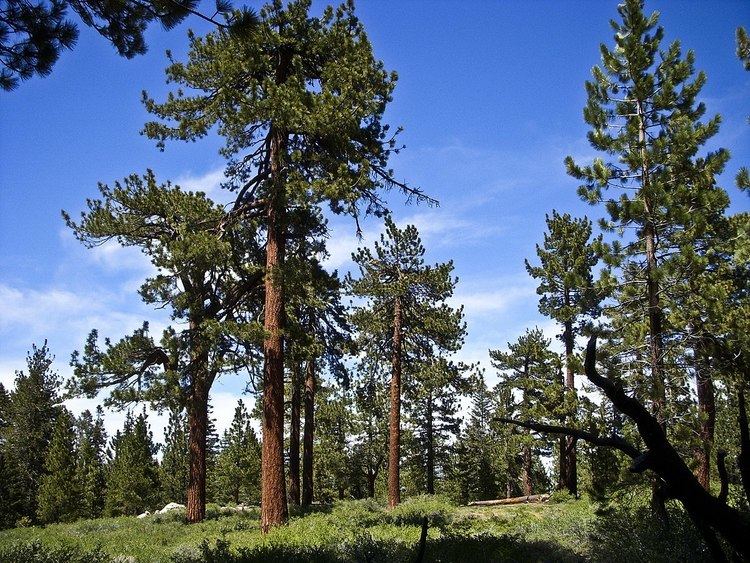 | ||
In ecology and forestry, yellow pine refers to a number of pine species which tend to grow in similar plant communities and yield similar strong wood. In the Western United States, yellow pine refers to Jeffrey pine or ponderosa pine. In the Southern United States, yellow pine refers to longleaf pine, shortleaf pine, slash pine, or Loblolly pine. In the United Kingdom, yellow pine refers to Eastern white pine or Scots pine.
Contents
Western United States
The Jeffrey pine and the Ponderosa pine are pines that are common in drier montane areas. They are often confused by casual observers.
Jeffrey pine is more stress tolerant than Ponderosa pine. At higher elevations, on poorer soils, in colder climates, and in dryer climates, Jeffrey pine replaces ponderosa as the dominant tree ("Jeffrey pine forest"). Ponderosa pine dominated forests ("Ponderosa pine forest") occur at elevations from about 300 to 2,100 metres (980 to 6,890 ft). Jeffrey pine dominated forests occur mostly in California, from 1,500 to 2,400 metres (4,900 to 7,900 ft) in the north, and 1,700 to 2,800 metres (5,600 to 9,200 ft) in the south. The highest elevations are typically on the east side of the Sierra Nevada. "Eastside pine forest" refers to areas of Lassen National Forest, Plumas National Forest, and Tahoe National Forest, all on the east of the Sierra Nevada crest, where Ponderosa and Jeffrey pine codominate.
Ponderosa pine forests occurs in the Colorado Plateau and in the Sierra Nevada of the western United States, as well as other parts of North America.
One way to distinguish between them is by their cones. Each has barbs at the end of the scales. The sharp Jeffrey pine cone scale barbs point inward, so the cone feels smooth to the palm of one's hand when rubbed down the cone. Ponderosa pine cone scale barbs point outward, so feel sharp and prickly to the palm of one's hands. Another distinguishing characteristic is that the needles of Jeffrey pine are glaucous, less bright green than those of ponderosa pine, and by the stouter, heavier cones with larger seeds and inward-pointing barbs.
Jeffrey pine wood and ponderosa pine wood are sold together as yellow pine. Both kinds of wood are hard (with a Janka hardness of 550 pounds), but the western yellow pine wood is less dense than southern yellow pine wood (28 pounds / cubic foot versus 35 pounds / cubic foot for shortleaf pine).
Southern United States
In the south, the yellow pines grow very well in the acidic red clay soil found in most of the region. The wood from the southern yellow pines typically has a density value between 50–55 lbs/cubic foot when pressure treated. Yellow pine grows across the South, from Texas to Virginia.
Dimensional lumber and plywood products manufactured from southern yellow pine are used extensively in home construction in the United States. They are also used for wooden roller coasters and most used for utility poles throughout the United States.
